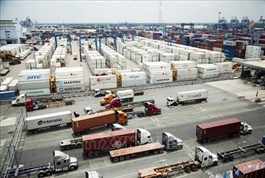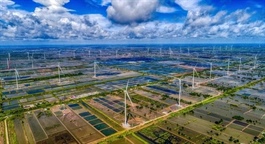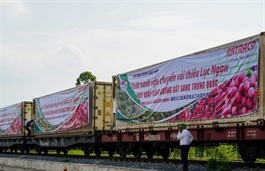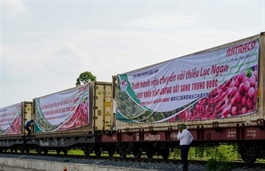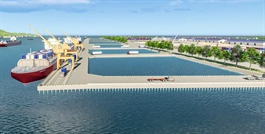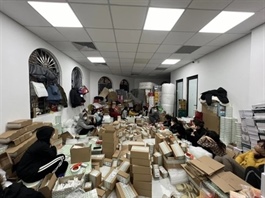Prime Minister urges diversification of power sources
Prime Minister urges diversification of power sources
The priority is to ensure that there is no electricity shortfall under any circumstances.
Prime Minister Pham Minh Chinh has instructed the Ministry of Industry and Trade (MoIT) and Vietnam Electricity (EVN) to diversify power sources, including importing electricity, to ensure there is no power shortage under any circumstances.
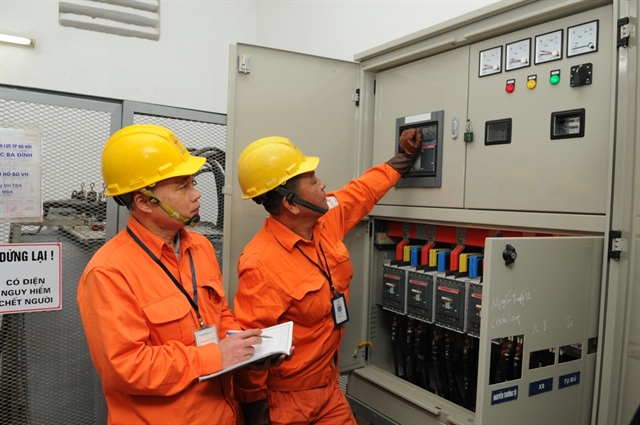
EVN Hanoi technicians check a power station. Photo: Thanh Hai/The Hanoi Times |
This directive was highlighted in a statement from the Government Office following Prime Minister Pham Minh Chinh's recent meeting on electricity supply.
According to the MoIT, national electricity consumption increased by 13% in the first four months of the year, exceeding the forecast of 9%. In northern Vietnam alone, demand rose by 17% compared to the same period in 2023.
As the country approaches the peak summer heat, especially in the North, the Prime Minister has emphasized the need for the MoIT and EVN to diversify power sources, including imports, to ensure sufficient electricity for both production and daily life in any situation.
Currently, Vietnam imports electricity from Laos and China via 220 kV and 110 kV transmission lines, but this accounts for a very small proportion of the total national demand. Data from EVN for the first four months of the year show that imported electricity amounted to 1.56 billion kWh or 1.6% of the total system.
The agreement between the two governments sets a target of importing at least 3,000 MW from Laos by 2025, increasing to 5,000 MW by 2030. The Prime Minister has approved the import of electricity from Laos with a total capacity of 2,689 MW. This imported electricity, mainly from hydropower, is cost-effective and competitive.
In early May, the government approved the MoIT and EVN's purchase of electricity from the 250MW Truong Son wind power project. However, this project will not be operational until 2025. The Prime Minister has also instructed all parties to maximize domestic sources such as coal, hydropower, renewable energy, and biomass. Power plants must schedule maintenance appropriately to prevent coal-fired plants from experiencing failures.
The Northeast Corporation and the Vietnam National Coal and Mineral Industries Group have been instructed to increase coal production and supply sufficient coal for power generation, minimizing coal imports. For hydropower, units must closely monitor weather and hydrological conditions to maximize output during peak periods.
Regarding electricity prices, the Prime Minister has asked the MoIT, the Ministry of Finance, the Committee for State Capital Management, and EVN to manage prices in such a way as to avoid sudden changes.
"Electricity prices must be manageable for people and businesses, with state regulation to maintain macroeconomic stability," the Prime Minister stated, emphasizing the need for the electricity sector to reduce costs, enhance digital transformation, and increase competitiveness.
At a meeting at the end of April, the Prime Minister stressed the need for proactive measures to avoid last-minute responses to power shortages, as happened last year.
A recent report from the National Load Dispatch Center (A0) forecasts that during the peak dry season this year (April-July), maximum power demand in the North could reach 27,481 MW, a 17% increase from the record high in 2023. However, the total electricity production and imports for the northern system during this period are expected to increase by only 10% compared to last year, reaching about 52.3 billion kWh.
Despite this, the MoIT asserts that the electricity supply this year will be largely secure. In the coming years, the northern power grid will receive additional capacity and energy from the central and southern regions following the completion of the 500 kV Quang Trach to Pho Noi transmission line.






